There shouldn't be any real need to uninstall
Windows Service Pack 1 unless you encounter problems
with your current hardware after the service pack
has been installed. If such problems do occur it may
be necessary to uninstall Windows 7 Service Pack 1
to enable you to troubleshoot any hardware problems.
It will only be possible to uninstall Windows 7
Service Pack 1 if you installed the service pack via
Windows Updates or if you downloaded and installed
the service pack from the Microsoft download site.
You should be aware that if your PC came
preinstalled with Windows 7 SP1 you will not be able
to uninstall the service pack.
If, however, you chose to remove the Windows
Service Pack 7 backup files, the only way you can
uninstall the service pack would be to re-install
the service pack once again and then uninstall it.
You can re-install Windows Service Pack 1 by
downloading the full version ISO. For further
details see
53. Install Windows 7 Service Pack 1.
There are two option for uninstalling Windows
Service Pack 1:
- Via Programs and Features
- Via the Command Prompt
Programs and Features Option
- Click the Start button and then, on the
right of the start menu, click Control Panel.
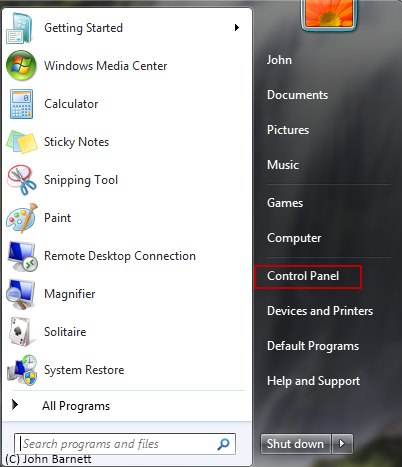
Fig 55-1 Windows Start Menu
- In the Control Panel window, Click the
Programs and Features Icon.
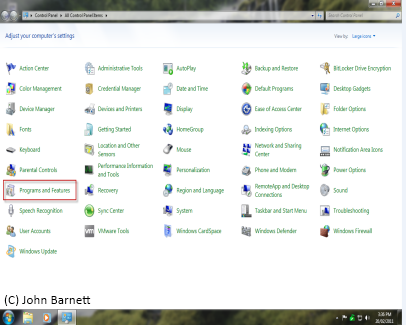
Fig: 55-2 Click the Programs
and Features icon
- In the Programs and Features window look to
the left of the window and you will see a Blue
margin. Click on the View Installed Updates
link.
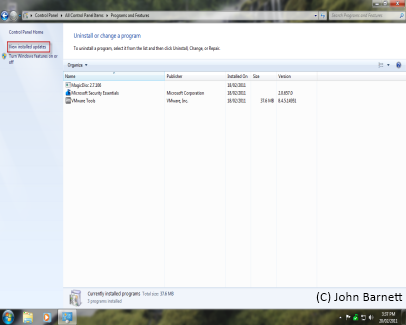
Fig: 55-3 Click the View
Installed Updates link to see a list of
currently installed updates
- A list of currently installed updates will
now appear. Look down the list of installed
updates until you come to Microsoft Windows
section. In the Microsoft Windows section look
for Service Pack for Microsoft Windows (KB
976932). Right Click on the Service Pack for
Microsoft Windows (KB 976932) and then click on
Uninstall.
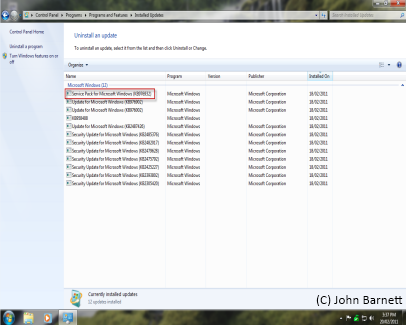
Fig: 55-4 Right Click on the
Service Pack for Microsoft Windows (KB 976932)
option
- A message will now appear asking if you want
to uninstall this update. Click Yes to continue.
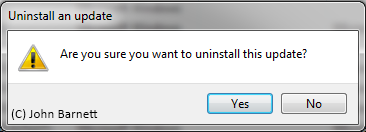
Fig 55-5 Click Yes to start
the uninstall
- Another message will inform you that the
update is being uninstalled. The actually
uninstall could take several minutes so be
patient.
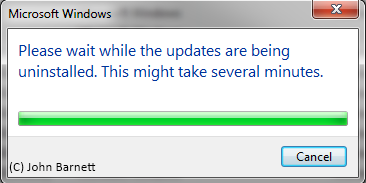
Fig 55-6 The progress bar
will show you how the uninstall is progressing
- Once the update has been uninstalled you
will be asked to restart your computer. To
continue, click the Restart Now button.
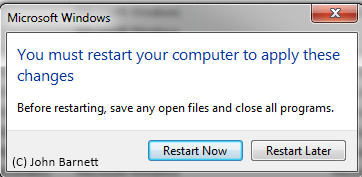
Fig: 55-7 Click the Restart
Now button to continue
- Windows will now start to configure the
service pack uninstall.
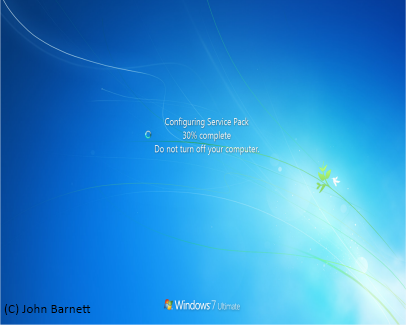
Fig: 55-8 Configuring the
service pack
- Once the configuration has reached 30% your
computer will Restart.
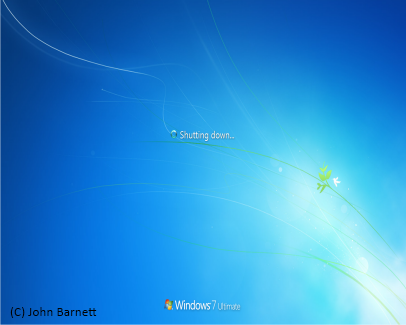
Fig: 55-9 Windows is now
shutting down
- On Restart the Windows Logo will appear.
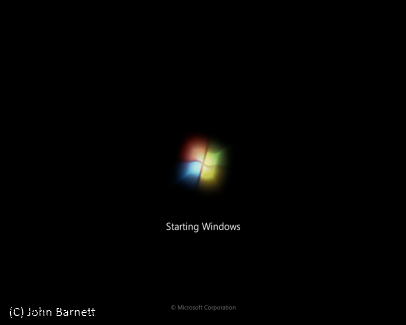
Fig: 55-10 Starting Windows
- Windows will now start to configure once
again. During this process Do Not turn off your
computer.
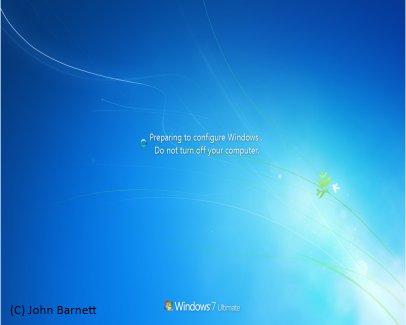
Fig: 55-11 Preparing to
configure windows
- The Configuring Service Pack window displays
its progress as the necessary files are
re-installed.
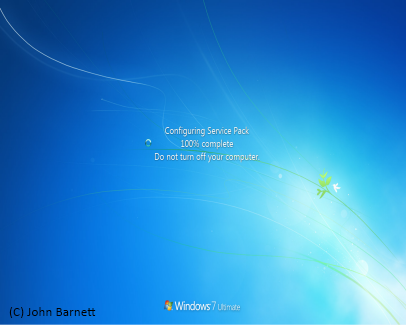
Fig: 55-12 Windows is now
configuring the service pack
- Once configuration has completed the Windows
Log On screen will appear.
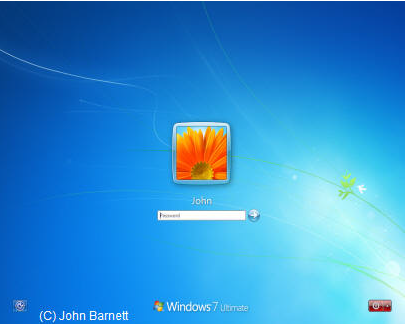
Fig 55-13 You can now Log on
to windows
- Windows Service Pack 1 has now been
uninstalled.
Command Prompt Option
To uninstall Windows Service Pack 1 using the
Command Prompt proceed as follows:
- Click the Start Button.
- In the Start Search Box, type: CMD
- The Command prompt option should appear at
the top of the start menu search list.
- Right click on the Command Prompt option
and, from the drop down menu, click on Run as
Administrator.
- If you are not the Administrator you will be
asked to provide the administrator password
before you can continue.
- In the command prompt window type:
wusa.exe /uninstall /kb:976932 and
press the Enter key.
- Windows Service Pack 1 should now start to
uninstall.